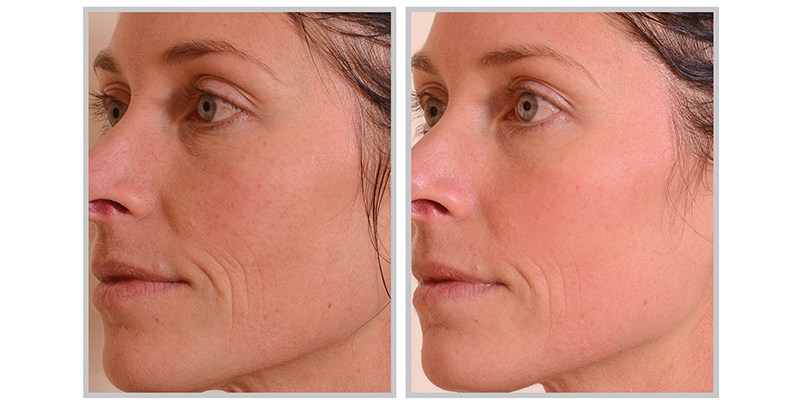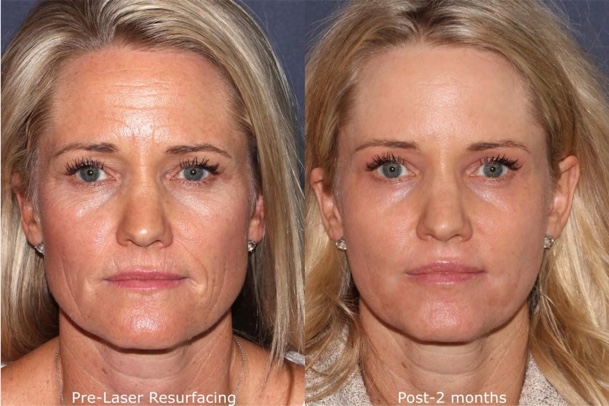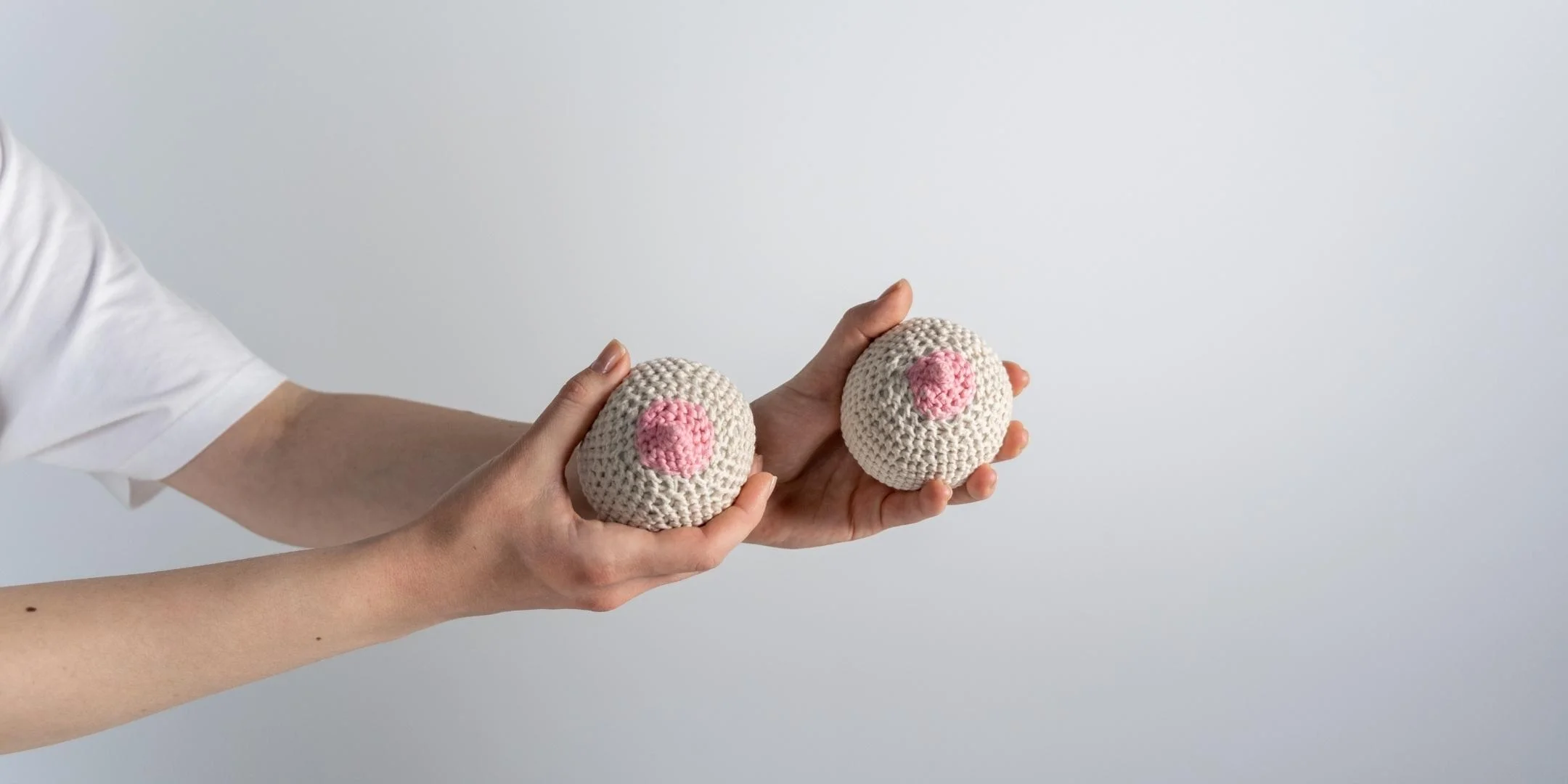- Laser resurfacing is one of the best treatments out there for people who want to treat several skin conditions at the same time.
- There are two types of lasers most often used in laser skin resurfacing treatments — ablative and non-ablative.
- Most patients report little discomfort with non-ablative lasers, and some pain with ablative lasers.
- Many laser treatments are equally as effective in treating those with lighter and darker skin tones alike.
What is laser skin resurfacing?
Laser skin resurfacing, also known as a laser peel, uses concentrated, pulsating beams of light to remove the outer layer of the skin, called the epidermis.
These lasers target the under-layer of the skin using high-heat beams, which encourages the production of new collagen fibers. Like most laser treatments, laser resurfacing creates micro-wounds in the skin. Through the body’s natural healing process, this produces brand-new skin that’s firmer, smoother and more youthful-looking.
If the thought of intentionally injuring your skin sounds somewhat unpleasant, it is: your skin will look injured for weeks — even months — following the treatment. Still, the procedure is considered safe, and the most-used resurfacing treatments are approved and regulated by the U.S. Food and Drug Administration (FDA).
It’s during the healing process that the magic really happens, when your skin starts to regenerate and rejuvenate. This does make post-operative care somewhat complicated, however, especially if you opt for ablative laser resurfacing, the more intense version of the treatment.
What are the different types of laser skin resurfacing?
Two types of lasers are most often used in laser skin resurfacing treatments — ablative and non-ablative.
Ablative laser resurfacing
Ablative lasers are often considered the “gold standard” in terms of skin resurfacing.
These lasers come in two types — the carbon dioxide (CO2) laser and the YAG, or Erbium laser. The reason ablative lasers are preferred over non-ablative is because they penetrate deeper into the skin, and are generally considered more intense and effective, even in extreme cases.
Because of this, you typically only need a single ablative laser treatment to get solid results. But here’s the downside: the recovery period is long and complex, and it can cost as much as double compared to non-ablative lasers.
Non-ablative laser resurfacing
Non-ablative skin resurfacing is an effective option, but it doesn’t create micro-wounds at the same intensity as ablative lasers, therefore it shouldn’t be used in more extreme cases.
With that being said, non-ablative lasers, such as Fraxel® lasers, can be a good choice for those who want to target surface imperfections. However, most patients require multiple treatments (usually between three and five) for the best results.
Non-ablative lasers may not be as immediately or deeply effective, but they come with a much easier recovery period and cost significantly less than ablative laser treatments. They’re also less painful during treatment.
Laser skin resurfacing before and after pictures


credit: cliniquedallas.com and ctderm.com
What are the benefits of laser skin resurfacing?
Laser resurfacing is one of the best treatments out there for people who have several different skin conditions at the same time. Depending on your specific concerns and skin type, your doctor may recommend pairing laser skin resurfacing with various other treatments, such as Botox or prescription retinoids, for the best results.
If you have mild instances of some of these conditions or more sensitive skin, doctors may recommend chemical peels —which are gentler on the skin but still strip away the top layer — instead of laser resurfacing.
The American Society of Plastic Surgeons (ASPS) recommends laser resurfacing for treating the following conditions:
- Wrinkles and fine lines around the eyes, mouth and forehead
- Acne scars or chickenpox scars
- Age spots and sun-damaged skin
- Skin laxity and unresponsive skin after a facelift
- Birthmarks, dark spots or liver spots
- Enlarged oil glands on the nose
- Warts, moles and other skin growths
- Dulling, yellow or grayish skin
How is laser skin resurfacing done?
Laser resurfacing can be done on an outpatient basis in a dermatologist’s office or cosmetic clinic. Your board-certified specialist or plastic surgeon may offer only localized anesthesia — especially if he or she is treating just small areas of the face — or general anesthesia for more in-depth laser treatment sessions.
The procedure varies in time depending on what you need done and what type of laser is used. If you just want to treat wrinkles around the eyes or mouth, you can expect to be done within under an hour. However, full-face treatments can take two hours or more.
Most patients report little discomfort with non-ablative lasers, and some pain with ablative lasers. Ablative laser patients often compare the sensation to the feeling of a rubber band slapping the skin, but anesthesia can help make the procedure much more tolerable.
What is the recovery time for laser skin resurfacing?
In the case of ablative laser resurfacing, your skin will begin to heal itself and peel after approximately five days. Those who undergo non-ablative laser resurfacing will have a much shorter, more manageable recovery, and usually don’t need to take any time off work or away from exercise and other daily activities.
During recovery, you’ll be required to clean the treated area several times a day using saline or a diluted vinegar solution, as directed by your plastic surgeon. He or she may also recommend or prescribe skincare products that help reduce healing time and assist in yielding the best results.
The majority of those who undergo this laser procedure will be required to treat healing skin daily using a high-quality moisturizer. Because the skin will be raw, it’s very important to limit sun exposure and always wear a 35+ SPF sunscreen for the entirety of your recovery time.
What are the side effects of laser skin resurfacing?
Following the treatment, most patients experience some discomfort in the form of swelling, itching and a burning feeling similar to a sunburn.
One of the primary downfalls of laser resurfacing is that it leaves the skin looking red, sometimes for up to three months after treatment. Luckily, you can wear oil-free makeup a few weeks into the healing period to diminish the appearance of redness. Additionally, laser skin treatments can cause a darkening effect, called hyperpigmentation. Others may experience temporary lightening for a few weeks after treatment.
Other risks and side effects include scarring, agitating cold sores, bacterial infections and burns. Some candidates, especially those with acne-prone or sensitive skin, also experience a heightened number of breakouts after the procedure. If you tend to have blemishes and breakouts, make sure to talk to your plastic surgeon about getting on a safe acne-fighting regimen after treatment.
Those who smoke may also have a longer and more complicated recovery period, so it’s important to stop smoking at least two weeks before treatment, and not smoke during recovery.
Who is an ideal candidate for laser skin resurfacing?
Those who regularly get cold sores or blisters around the mouth, and those who have active acne, may not be the best candidates for laser resurfacing. However, doctors may still perform the procedure so long as you don’t have an active breakout. You may be prescribed antiviral medications beforehand such as Zovirax to prevent outbreaks of herpes-related cold sores.
Additionally, patients should avoid certain medications for up to 10 days prior to surgery. Some supplements and medicines — aspirin, ibuprofen and vitamin E, for example — can cause blood thinning and compromise results. Talk to your plastic surgeon about your medical history before starting any new skin treatment.
There’s a common myth that those with darker skin won’t benefit from laser treatments, but that’s not entirely true. Many laser treatments are equally as effective in treating those with lighter and darker skin tones alike.
For example, the Erbium lasers are proven to leave less discoloration, which makes them more popular for lighter-toned African American, Hispanic and Asian patients. And, if you’ve heard that laser resurfacing can cause skin cancer, think again: some studies suggest that these treatments can be used to treat precancerous skin lesions and may even lower the risk for skin cancer.
What is the cost of laser skin resurfacing?
As previously mentioned, laser surfacing costs totally depend on which type of laser you use, how many treatment areas you intend to treat and where you live.
Non-ablative laser resurfacing treatments are significantly cheaper on the whole than ablative laser resurfacing treatments. On average, ablative laser resurfacing, including CO2 lasers, cost about $2,330, while non-ablative treatments, including Fraxel, cost about $1,031.
If you prefer to have general anesthesia during the treatment, your bill may be significantly higher. Unfortunately, these treatments are often considered purely cosmetic, so they won’t be covered by insurance. However, in the case of using laser resurfacing to treat precancerous cells, your insurance may provide some relief.









